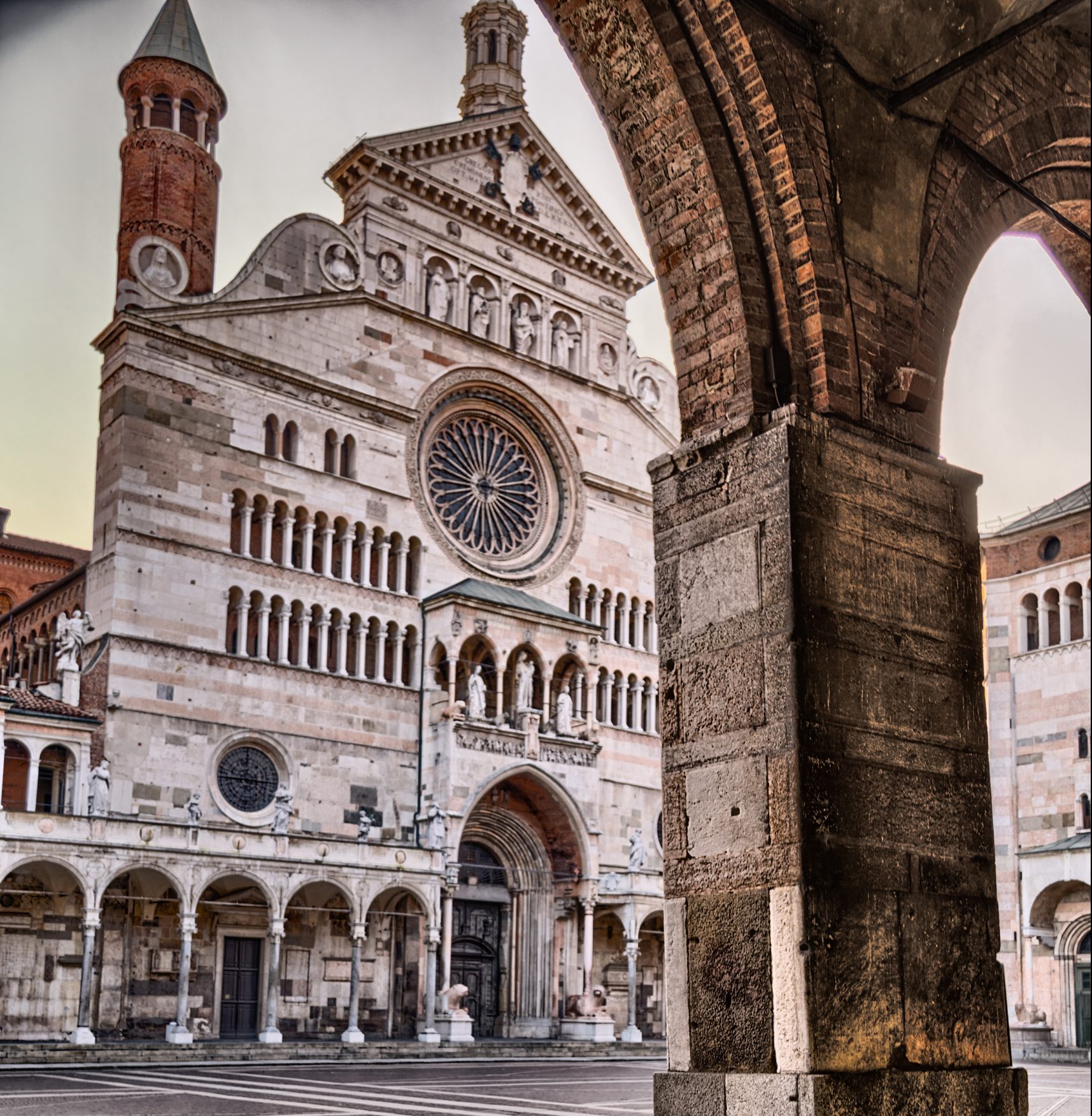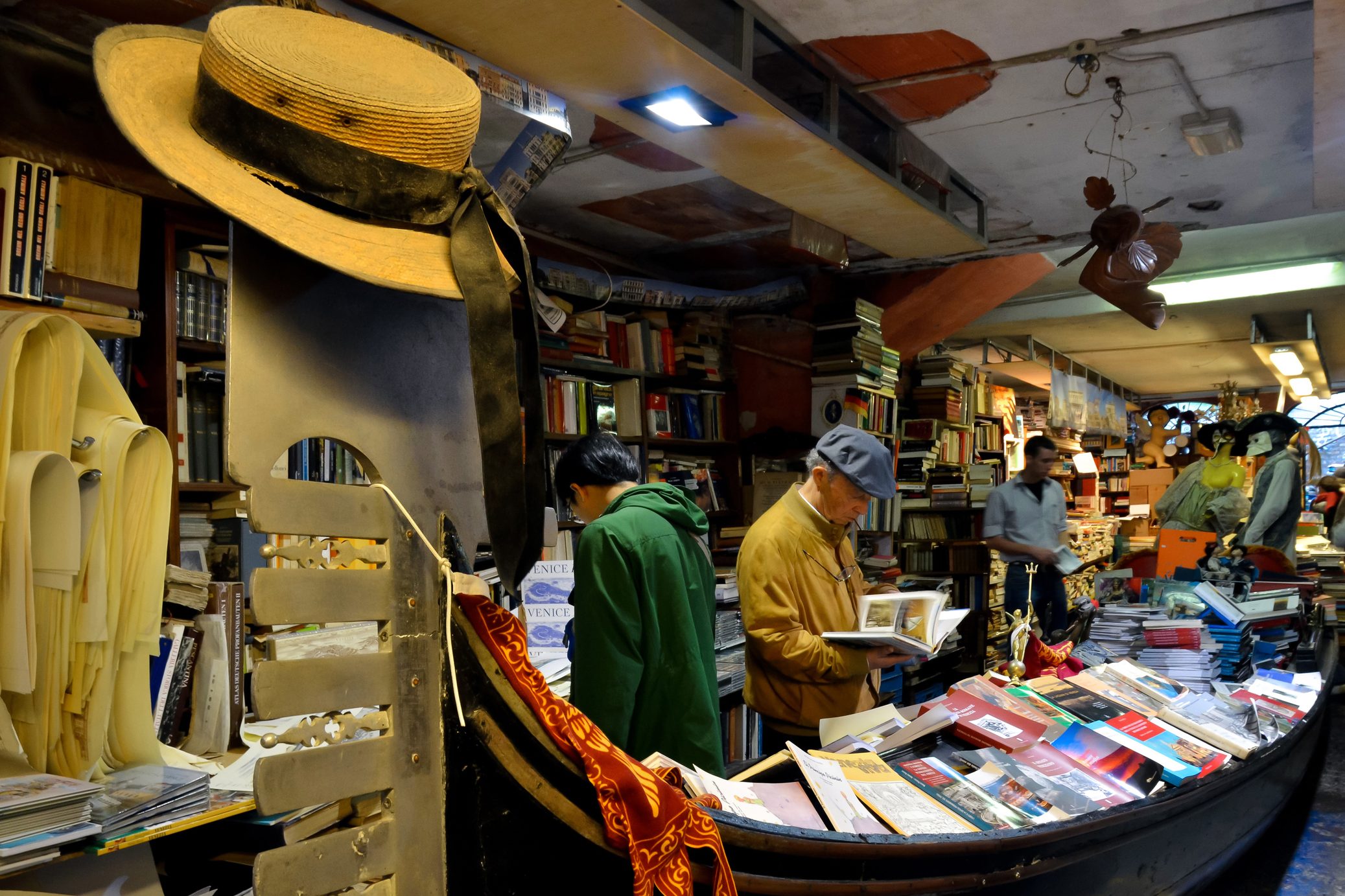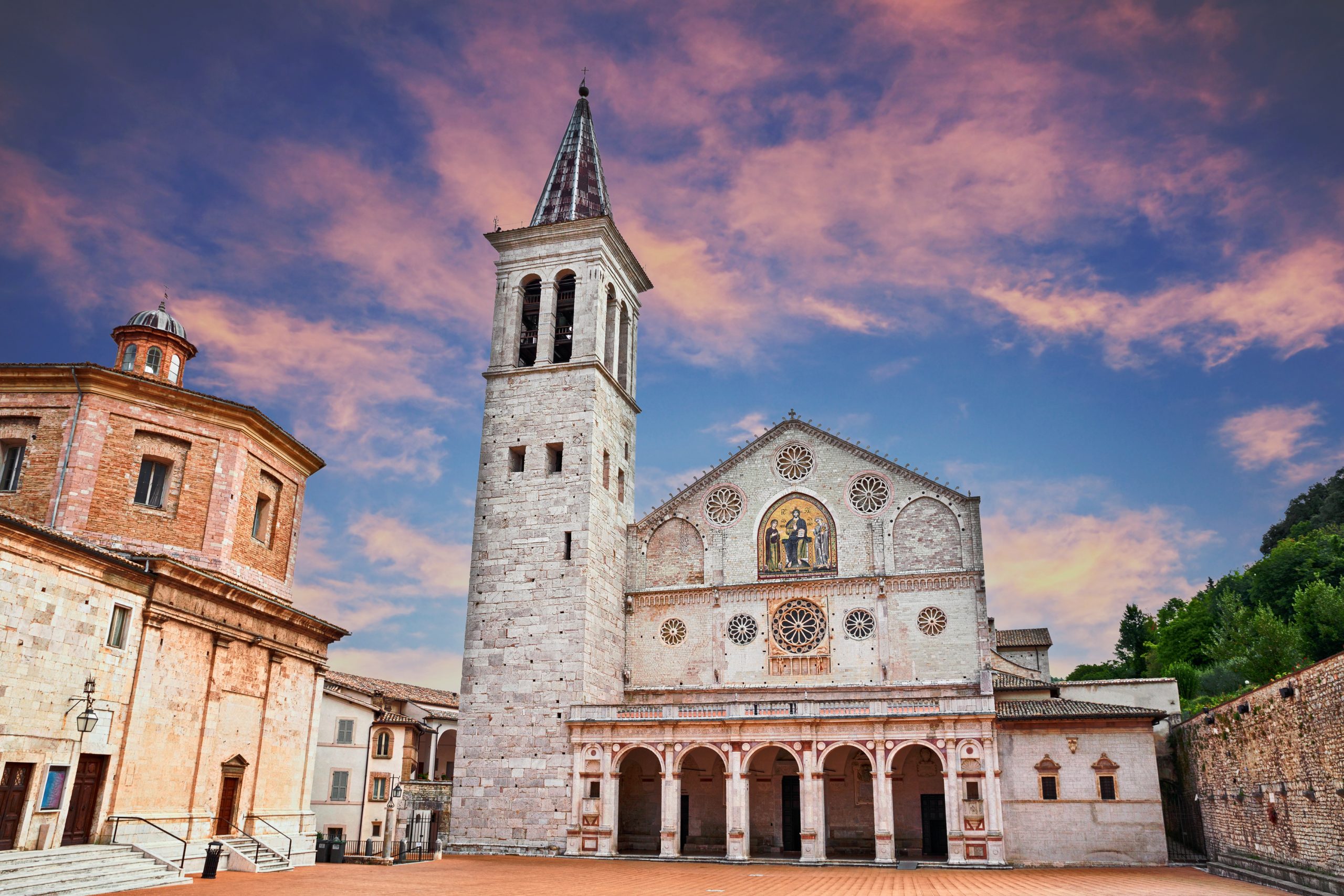Nestled on the left bank of the river Po, right in the middle of the Pianura Padana, Cremona has one of the richest histories in Northern Italy, sports a lively musical scene and is renowned around the world for its luthiers, as it gave birth to Antonio Stradivari and many other string instrument makers, composers and musicians.
Quiet and understated, the town center is neatly manicured and offers visitors a great opportunity to roam around its narrow streets –most of which are pedestrian only- and get wonderfully lost within its stylish palazzos and hidden courtyards.
The Cremona Cathedral, the city’s biggest and most beautiful church, is definitely worth a visit both because of its imposing exterior and gorgeous interior: art buffs will fall in love with its details, its sculptures, statues and frescos.
Dedicated to the Assumption of the Blessed Virgin Mary, the Cathedral was originally built in Romanesque style between 1107 and 1170, and was subsequently restored and extended, so that today it also features Gothic, Renaissance and Baroque elements. Inside the church visitors can admire some of the most impressive frescos from the 14th, 15th and 16th centuries, including masterpieces by Il Pordenone, who painted many scenes from the Passion of the Christ on the Cathedral’s sidewalls.
The bell tower, called the Torrazzo, is a work of art itself: at 343 feet is the third tallest brick bell tower in the world, while it is the oldest brick structure taller than 300 feet that still stands to this day. Its construction began in the 1230s and was completed with a marble spire in 1309: a plaque embedded at the base of the tower states that is 250 arms and 2 ounces tall – an ancient measuring system popular in towns around Lombardy that translates to roughly 340 feet. The Torrazzo also features the largest astronomical clock in the whole world: it was built between 1583 and 1588 by a father and son team – Francesco and Giovan Battista Divizioli – and it represents the sky, complete with the twelve zodiac constellations, with the Sun and Moon moving through them.
Local cuisine is famous throughout Italy, and for a good reason: mostarda, the sweet and sour condiment made with candied fruit in a mustard-flavored syrup, is said to originate from here and can be savored with another specialty from the area, the mixed boiled meat platter bollito misto. For an authentic Cremona-style meal grab a table at centrally located Trattoria Vineria Toscanini: this wonderful, old school restaurant serves traditional dishes prepared with local ingredients just like a grandmother would do in her kitchen: the cold cuts –prosciutto, salame, culatello- are to die for, and so is the homemade pasta.
If you have a sweet tooth make sure to try some torrone, one of Cremona’s best loved desserts. Made of honey, egg whites and almonds, this confection is extremely popular around Christmas, but can be enjoyed year round: in November the town hosts the Festa del Torrone, a week long celebration during which Cremona celebrates its culinary traditions along with its music and art.
June, too, is a perfect time of the year to visit: the whole month is dedicated to the celebration of St. Peter with the “Fiera di San Pietro”, an outdoor festival extravaganza on the banks of the river that each year attracts young and old, tourists and locals alike. The festival culminates on the night of June 29th with a spectacular pyrotechnical show for all to enjoy.
Whatever the length and reason for your visit, staying at elegant Villa Belussi is always a smart choice: this historical villa is only 20 minutes from the town’s center and offers stylish accommodations at very reasonable prices. The hotel also features an award-winning restaurant that offers menus that change with the seasons and that also caters to vegetarians – a real treat in a town that mostly showcases meat-heavy dishes. If you prefer to stay downtown, Bed & Breakfast Monteverdi, only a few feet away from the Cathedral, is very centrally located and the perfect starting point to explore the town center.
Cremona can be reached by car by taking the A21 highway Turin – Brescia, and it’s linked by rail with Milan, Mantua and Parma. Closest airports are Bergamo Orio al Serio, Milano Linate and Parma.































